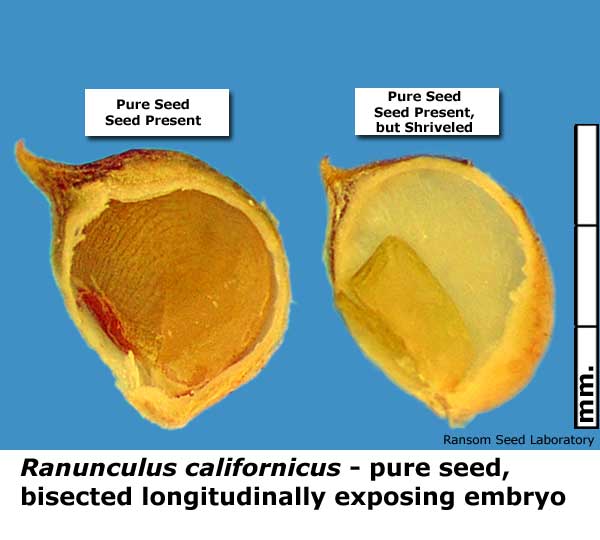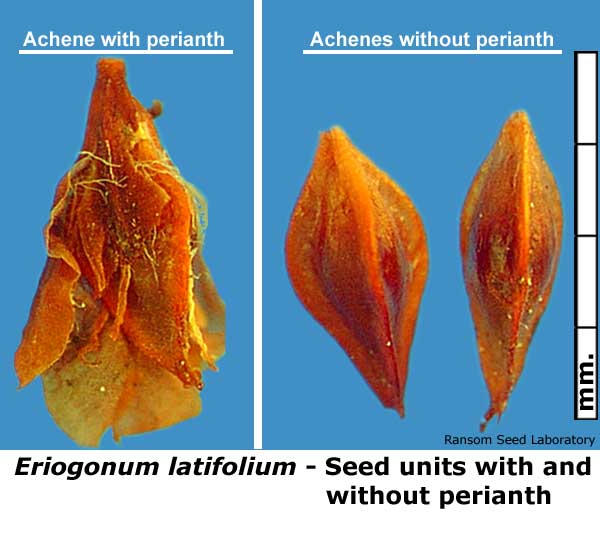Verbena lasiostachys Link
Verbena, Western vervain
Family: Verbenaceae
Habit: Perennial 35 to 80 cm., much-branched. Inflorescence in terminal spikes of blue to purple flowers.
Distribution: Found in dry to moist places below 8000 feet, in many plant communities in cismontane California north to Oregon and south to Baja California.
Seed unit: Nutlet, usually single, but sometimes up to four fused together.
Seed: Nutlet 1 to 2 mm., compressed-oblong and slightly rounded-triangular in cross section, making it somewhat two-sided; the rounded back bearing lengthwise ridges toward lower end and a network of cross ridges above; inner face of two planes meeting in a low ridge, the surface generally covered with whitish papillae; margin bordered by a narrow flange; attachment scar whitish.
Embryo: A foliar embryo in woody seed coat, endosperm lacking.
Purity instructions: Pure seed definition:
AOSA: PSU #10 – Intact nutlet, whether or not a seed is present. Piece of broken nutlet larger than one-half of the original size, unless no seed is present. Seed, with or without seed coat. Piece of broken seed, with or without seed coat, larger than one-half the original size.
ISTA: PSD #18 - Nutlet, unless it is obvious that no seed is present. Piece of nutlet larger than one-half the original size, unless it is obvious that no seed is present. Seed, with the pericarp/testa partially or entirely removed. Piece of seed larger than one-half the original size, with the pericarp/testa partially or entirely removed.
Lab notes: Often samples contain multiple seed units.
Average pure seed units per gram: 2,418 seeds per gram (based on AOSA pure seed units only from 18 samples received for testing from 1997 to 2004).
Range of percent pure seed: 91 to 98%
Range of percent inert: 1 – 8%
Description of inert: Plant material, dirt
Planting instructions: 400 seeds, TB, 18 days @ 15 to 25°C; for fresh and dormant seed, GA3 recommended @ 15°C.
References: (link to main reference page)
Hickman, J.C., Ed. 1993. p. 1088.
Martin, A.C. and W.D. Barkley. 1961. p. 194.
Munz, P.A. and D.D. Keck. 1968. p. 687.
Ransom Seed Laboratory








































